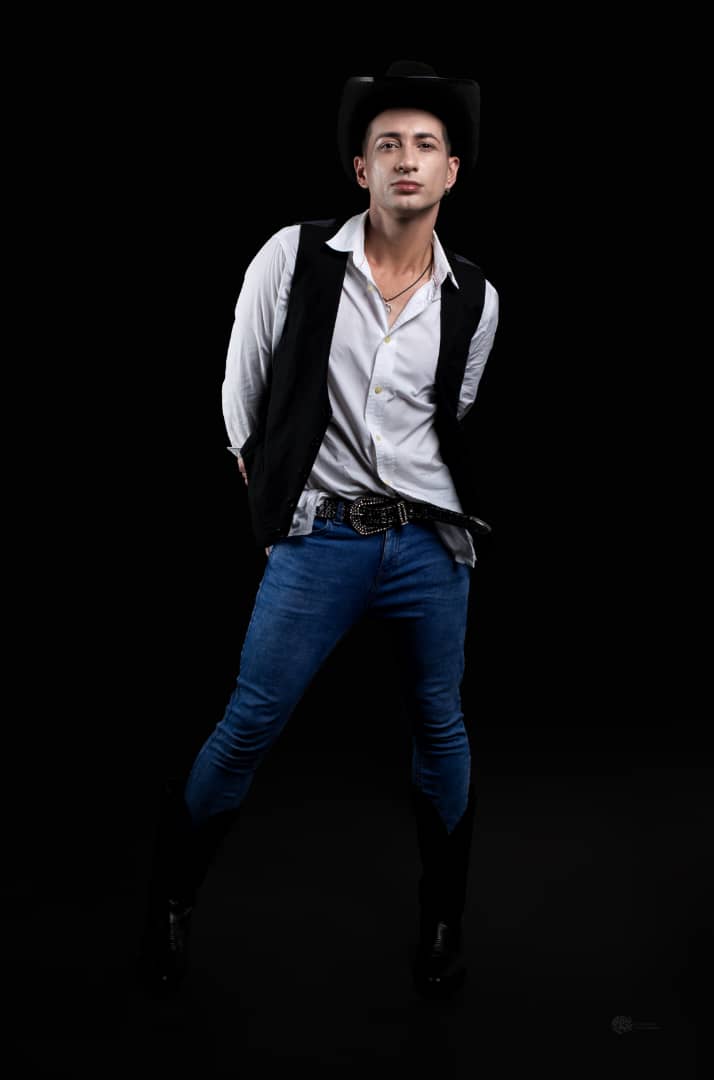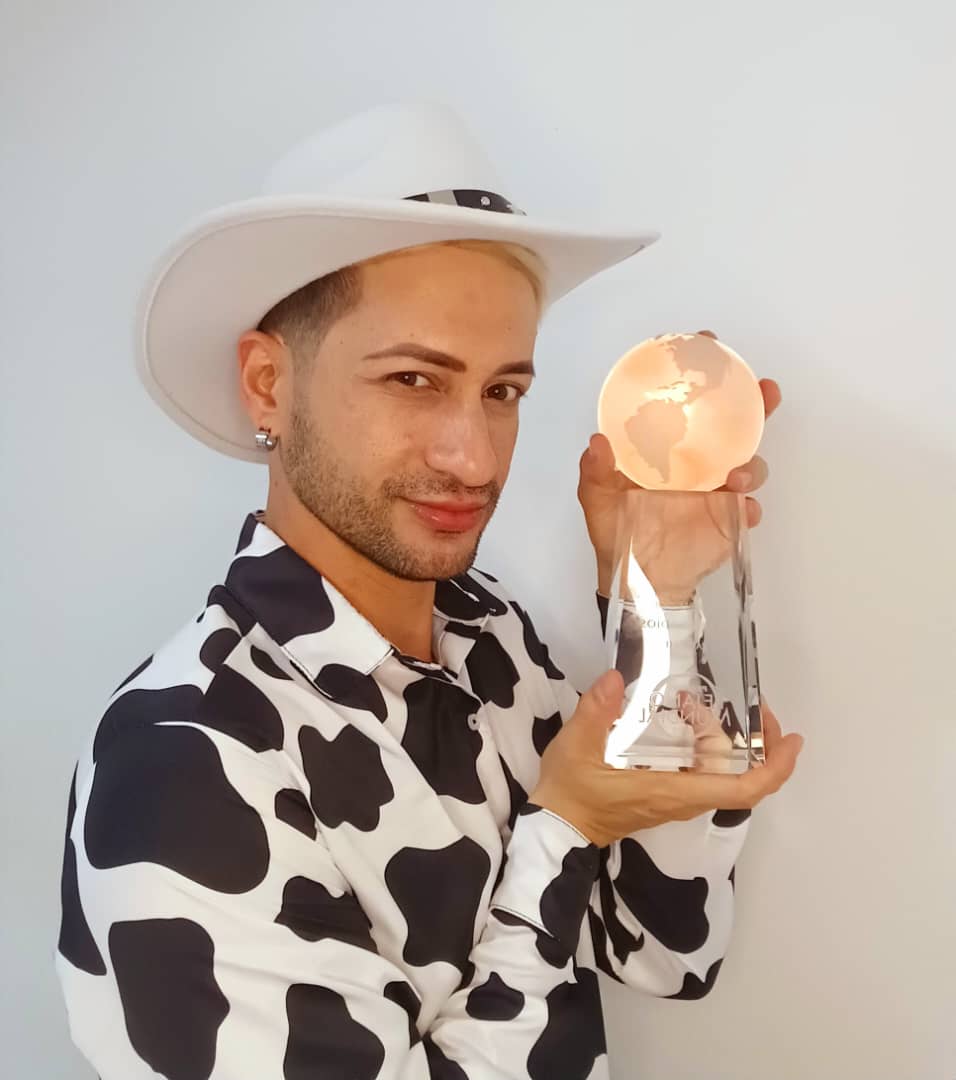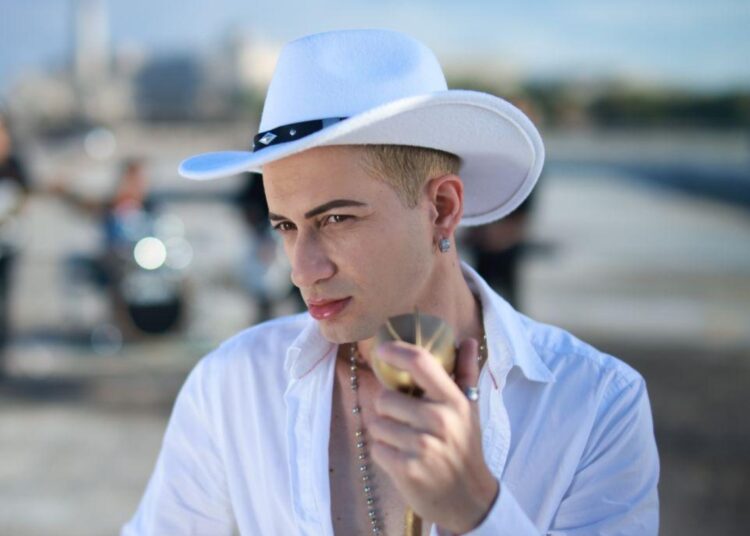Jorge Soto (Holguín, March 12, 1986) took his first steps in music in his native Holguín. At the beginning, he performed songs by world pop celebrities such as Ricky Martin and Chayanne.
In 2005, after moving to Havana in search of work opportunities, Papushi, as he is known in the artistic world, recorded his first two songs under the musical production of Ernesto Blanco.
“Sexy” was his debut song on Radio Cadena Habana, and Soy Papushi (2007) was his first solo album.
In 2009, he joined the roster of the Barbarito Diez Provincial Music Company of Las Tunas as a professional singer.
He then returned to Havana, where he recorded his second album, Como un niño bueno (2014).
Between those beginnings and his recent win at the Premio Tejano Mundial in the Cumbia Pop Song of the Year category (2025), there’s a long and arduous journey.

Your beginnings were filled with a lot of activity in terms of music and the places you visited throughout Cuba. What memories stand out from those early years?
It was 2002. I went to a disco bar in Holguín where they held karaoke competitions as part of a show. The friends I’d gone with told me to go ahead and sing; they knew I really liked music, but I’d never sung in public. I did so with the song “Laura no está,” a hit by the Italian singer Nek, and it was so well received that I returned to that place night after night, eager to sing again.
The decision I made when I moved to Havana, a place completely unknown to me and very different from Holguín, took me a little time to adapt to, but I had to do it. I wanted to begin my professional career in music. That was in April 2005.
If you had to briefly describe how your career has developed from the beginning to the present, what would you say?
It has been a journey of great perseverance, total dedication, and a lot of sacrifice. Music has been a dream that I have had to fight for practically alone, especially in the beginning.

You started singing house and pop songs, and composing ballads and rancheras. You ended up transforming Selena’s Tex-Mex into urban music with the 2018 release of the album Por siempre Selena. Why did you decide to venture into such different genres?
They were different stages of my life. I’ve been in music for 20 years now, and I initially wanted to experiment with dance and house, then urban, bachata, pop ballads, and others, until recently arriving at the Tex-Mex genre. The truth is, I like to test myself as a performer, to feel like I can do different genres. Maybe I was looking for the style I felt best with, but I’ve liked them all.
What musical genre do you prefer?
Without a doubt, Tex-Mex cumbia, which is what I’ve been doing for over a year. It was the first musical genre I became interested in as a child, through Selena’s music.
You’ve also written songs for singers like Yolie, Yenisey del Castillo, Rafael Espín and Leyanis López. They’ve become hits. Between writing and performing, which facet do you enjoy the most?
I love writing. It doesn’t matter if there are many songs already written that haven’t been recorded; composing is a form of expression that comes from my soul and heart. Almost everything I write I’ve lived and felt.
What do you consider to be the hallmark of your lyrics and performances?
Feeling. When I write and sing, I always try to give them that, since I almost always write about love or heartbreak.

Are there any differences in your creative process when you compose for another artist?
I usually write the song as if I were going to perform it myself. Then I suggest to the singer what I think would fit them. I did that from 2013 to 2021. After that, I dedicated myself more to writing for myself. Doing both at the same time took up a lot of my time; singers are very demanding.
Among the achievements you’ve reached during your two-decade career was the song “Bailando con Juana” (2017), a duet with Juana Bacallao. It became a radio hit, as well as number one on the Pistacubana website and the annual Los Lucas video. Has there been another moment like that that you consider a turning point in your career?
Yes; it was in 2015, when I achieved my first success composing for other artists in Cuba. The ranchera-pop ballad “Te borré de mi vida,” performed by Leyanis López, became a hit in Cuba, despite the fact that this musical genre isn’t very common on the island’s music scene. After two years writing songs for Cuban singers, that song gave me the recognition I needed as a composer.
Who have been the main musical influences, both Cuban and foreign, in your career?
I admire many Cuban and international artists, but Selena is the main inspiration in my music. There are also others like Celia Cruz, Benny Moré, Gloria Estefan, Paulo FG, Juan Gabriel, Polo Montañez, Madonna, Luis Miguel, Ricky Martin, and many more. Although they have different styles and eras, they are exemplary artists to follow in music.
What collaboration did you really want to achieve, and did it come to fruition?
I always wanted to unite my voice with Selena’s, because she is my inspiration in music, but she was no longer physically with me. But thanks to technology, in 2016, the first duet I made with her was released: her hit “Si una vez,” with music producer Carlos Lara “El Anarkiologo.”
Then came two more duets of the songs “Como la flor” and “No debes jugar”; in which we experimented with the urban genre. It was a dream come true, especially because of the acceptance it achieved.
What has been the biggest challenge you’ve faced since beginning your career?
To never give up on anything or anyone, and to always defend what I believe in and what I want to achieve.
How do you long for public recognition?
As a Tex-Mex singer, I think I’m achieving it, both in Cuba and in Texas and Mexico.
After the release of albums like Por siempre Selena (2018) and El irrepetible (2020), you’ll release El rey del tex-mex in February 2024. On this compilation, you included the song “Te digo adiós,” which a few months ago received the Premio Tejano Mundial in the Cumbia Pop Song of the Year category (2025). What does it mean to you to be the first Cuban to win an award in this competition?
It’s very important. I still can’t believe it. It’s a sign that this is the path I should follow in music.
Do you feel it as a personal or collective victory?
Both. Personally, if I hadn’t decided to make this album, it wouldn’t have been released and I wouldn’t have won the award. But it’s also a collective victory. Music producer Carlos Cartaya did a great job on this album. Other people supported me and believed in me.
“Te digo adiós” was one of five songs nominated in the category during the fifth edition of the event, which recognizes Tejano music hits worldwide and was held in San Antonio, Texas, United States. What’s next for Papushi’s artistic career after achieving this triumph?
Finishing my album El rey del tex-mex, which I decided to name in honor of Selena, the queen. Then, I want to tour Texas and Mexico first, and maybe this year, perform a duet with Alicia Villarreal, the queen of Regional Mexicano, who knows my work and has shown admiration for it.







